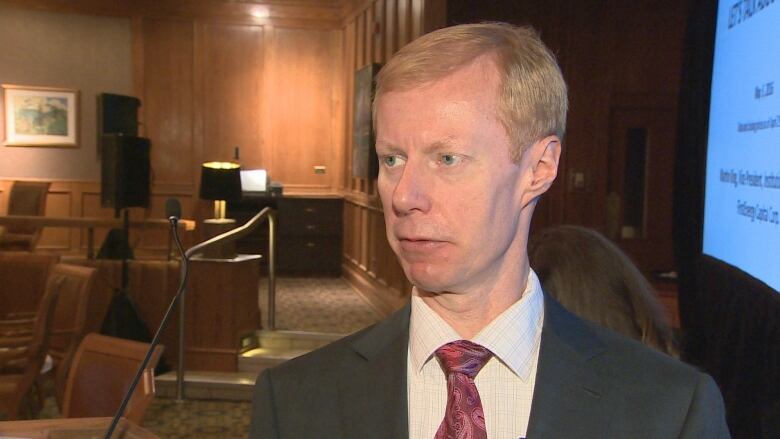The U.S. will not drown the world in oil, forecaster says
Expected OPEC cuts 'should create enough momentum to get inventories drawn down,' Martin King tells oil execs

The price of oil has been in the doldrums for months now, as OPEC cartel members cut supply and U.S. producers increase it.
But a Calgary energy forecaster told an audience of oil executives Tuesday to keep the faith, that the United States will not drown the world in oil and prices will eventually respond to the cuts in production and increases in demand.
- Oil prices set to rise sharply, unless new projects are approved
- Oil prices fell in Q1 as U.S. stepped up crude production
"It is fundamentally impossible for the U.S. to offset all the supply cuts from OPEC, the supply cuts from participating non-OPEC countries and deal with demand growth," Martin King, director of institutional research at GMP FirstEnergy, said at the Petroleum Club in Calgary.
As a result, King expects the price of oil will rise in the second half of 2017, to $60 US, and average $65 in 2018.
That would not be enough to spark much oilsands growth, but sufficient to keep most surviving producers in the black.
How much can the U.S. produce?
Energy traders have been focused on the U.S. inventory numbers released every Wednesday. Inventory levels are still high in the United States, although King pointed out that they are starting to drop in other parts of the world, such as in China and Saudi Arabia. As well, floating storage — held in tankers on the seas — is in retreat.
The question is how far the U.S. will increase its production.
- OPEC cuts, while the U.S. turns on the oil taps
- Oil production tug of war looms between OPEC and U.S.
King expects U.S. shale producers to increase their production by two million barrels per day by the end of 2019. That would smash the country's previous production record, set in 1970, of 9.6 million barrels per day.
But even that, he said, is not quite enough, so long as production cuts remain in place from OPEC and non-OPEC members like Russia.
"We do expect OPEC cuts to be extended in the second half of this year," said King. "And that should create enough momentum to get inventories drawn down. That's the math people go through — the U.S. supplies cannot offset that."
Canada's place
As always, Canada is not a player in the oil price market, as it simply doesn't produce enough to have an impact.
Canada's supplies are still rising modestly, tied to oilsands projects approved before the price crash of 2014. A bigger boost in prices would be needed for Canadian production to pick up steam.
"To get more investment, you need to see higher prices, something more sustainable into the upper 60s and 70s," said King.